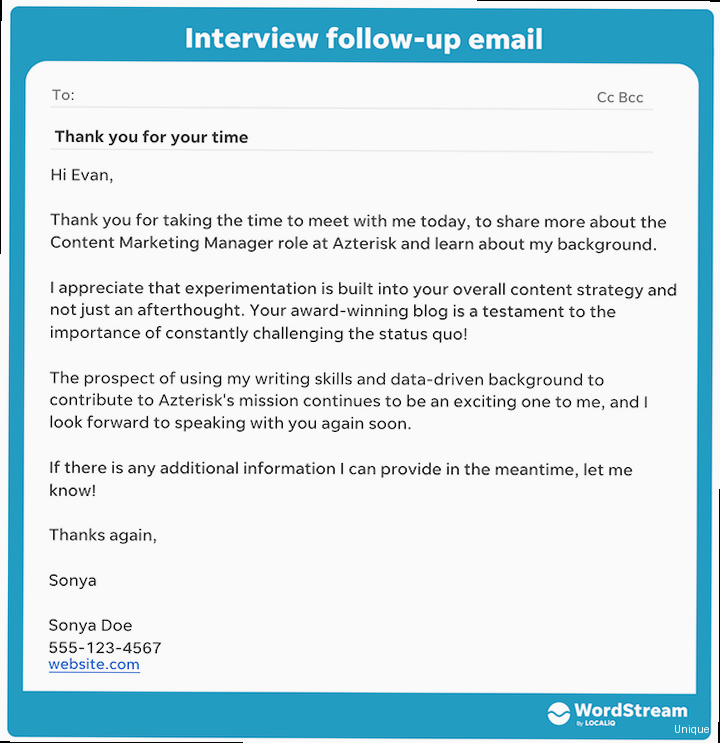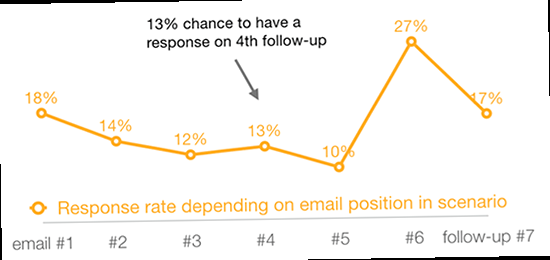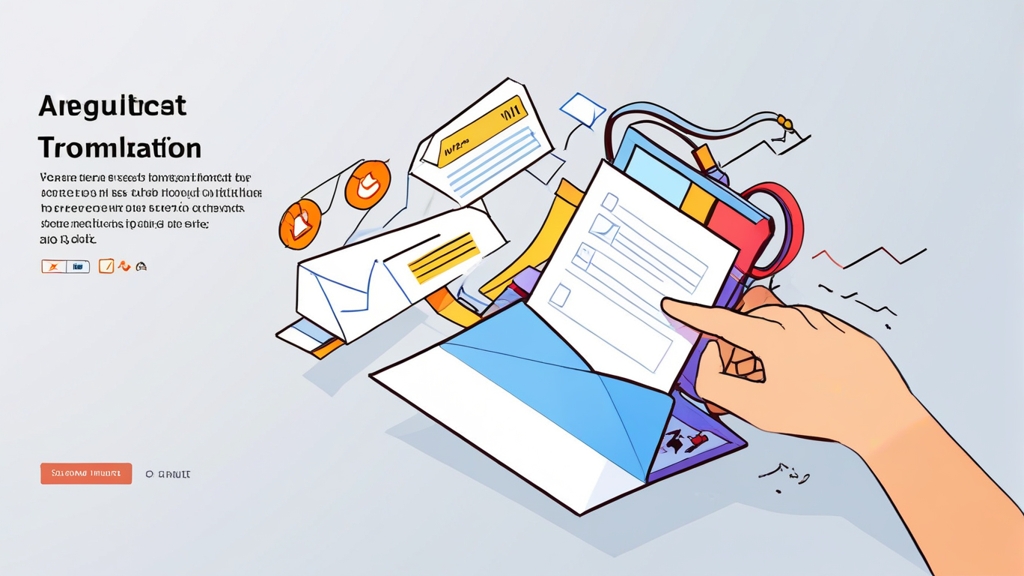Crafting the Perfect Follow-Up Email: A Practical Guide
Following up is crucial for securing deals, building relationships, and moving projects forward. But what should you actually write in those follow-up emails to maximize your chances of success? This article provides a focused, practical guide to crafting effective follow-up emails, covering different scenarios and offering concrete examples to help you get the desired results. We’ll explore strategies for adding value, re-engaging recipients, and avoiding common pitfalls.
Following Up After a Meeting: Reinforcing Connections
 follow up email - A person shaking hands with another person in a professional setting. The image represents a meeting or collaboration." title="Illustration for A person shaking hands with another person in a professional setting. The image represents a meeting or collaboration." width="512" height="512" / class="wp-image-187 wp-image-12400">
follow up email - A person shaking hands with another person in a professional setting. The image represents a meeting or collaboration." title="Illustration for A person shaking hands with another person in a professional setting. The image represents a meeting or collaboration." width="512" height="512" / class="wp-image-187 wp-image-12400">Following up after a meeting is a cornerstone of professional communication. It’s your chance to reinforce the connection you made, solidify key takeaways, and propel the conversation toward the next steps. A well-crafted post-meeting follow-up demonstrates your attentiveness, professionalism, and commitment to the agreed-upon goals. The key is to be timely, specific, and action-oriented.
Example 1: The Standard Thank You and Summary
This type of follow-up is suitable for most post-meeting scenarios, especially when specific action items were discussed.
Subject: Following Up - [Meeting Topic]
Hi [Name],
It was great connecting with you today to discuss [Meeting Topic]. I appreciated learning more about [Specific topic discussed].
Just to summarize, we agreed on the following action items:
- [Action Item 1] - assigned to [Person] - due date [Date]
- [Action Item 2] - assigned to [Person] - due date [Date]
I've already started working on [Your specific action item]. Please let me know if you have any questions or require further clarification.
Thanks again for your time.
Best regards,
[Your Name]
Explanation:
- Subject Line: Clear and concise, immediately conveying the email’s purpose.
- Personalized Greeting: Using the recipient’s name establishes a personal connection.
- Gratitude: Expressing appreciation for their time shows respect and builds rapport.
- Summary of Action Items: This ensures everyone is on the same page regarding responsibilities and deadlines. Listing the responsible party and due date makes it crystal clear.
- Your Commitment: Mentioning that you’ve already started on your tasks demonstrates proactiveness.
- Call to Action: Encourages further communication and collaboration.
- Professional Closing: Maintains a professional tone.
Example 2: Following Up After a Potential Partnership Discussion
When the meeting involved exploring a potential partnership, the follow-up should focus on reinforcing the value proposition and suggesting concrete next steps.
Subject: Following Up - Partnership Opportunities between [Your Company] and [Their Company]
Hi [Name],
Thanks again for a productive meeting today. I enjoyed discussing the potential synergies between [Your Company] and [Their Company].
I was particularly excited about the possibility of [Specific potential synergy]. As discussed, I've attached a more detailed proposal outlining how our companies can collaborate to achieve [Specific goal].
I'd be happy to schedule a follow-up call next week to discuss the proposal further and answer any questions you may have. Please let me know what time works best for you.
Best regards,
[Your Name]
Explanation:
- Reinforce Excitement: Reiterating your enthusiasm reinforces the positive aspects of the discussion.
- Highlight Specific Synergies: Mentioning concrete examples makes the potential partnership more tangible.
- Provide Supporting Materials: Attaching a detailed proposal demonstrates your commitment and provides valuable information. Ensure the proposal is well-written and visually appealing.
- Clear Call to Action: Suggesting a specific next step (a follow-up call) makes it easy for the recipient to engage further. Providing flexibility by asking for their preferred time increases the likelihood of a response.
Example 3: Following Up After a Job Interview
This follow-up reinforces your interest in the position and reiterates your qualifications.
Subject: Following Up - [Job Title] Interview
Dear [Interviewer Name],
Thank you so much for taking the time to interview me for the [Job Title] position yesterday. I truly enjoyed learning more about the role and [Company Name]'s goals.
Our conversation further solidified my interest in this opportunity. I was particularly excited to hear about [Specific project or aspect of the role that excites you]. I believe my experience in [Relevant Skill 1] and [Relevant Skill 2] would be a valuable asset to your team.
Thank you again for your consideration. Please let me know if you require any further information from me.
Sincerely,
[Your Name]
Explanation:
- Express Gratitude Immediately: Sending the email within 24 hours of the interview shows your enthusiasm and professionalism.
- Reiterate Your Interest: Clearly stating your continued interest reinforces your commitment.
- Highlight Relevant Skills: Reminding the interviewer of your key qualifications helps them remember why you are a strong candidate. Tie your skills directly to the needs of the role, as you understood them from the interview.
- Offer Additional Information: Demonstrates your willingness to go the extra mile.
Expert Tip: Tailor each follow-up email to the specific meeting and the individuals involved. Generic follow-ups are easily ignored. Spend the extra time to personalize your message and demonstrate that you were actively listening and engaged during the meeting.
Following Up on a Sales Lead: Nurturing Prospects

In sales, following up is paramount. Most sales don’t happen on the first interaction. Consistent, strategic follow-up is necessary to nurture leads, build trust, and ultimately convert prospects into customers. The key here is to provide value with each interaction and avoid being overly pushy. Think of the follow-up as continuing the conversation, not just a reminder to buy.
Example 1: Providing Additional Information and Resources
This approach focuses on providing value by sharing relevant content that addresses the prospect’s needs or pain points.
Subject: Following Up on [Product/Service] - Additional Resources for You
Hi [Name],
It was a pleasure speaking with you on [Date] about [Product/Service]. I understand you're facing challenges with [Prospect's Pain Point].
I thought you might find this resource helpful: [Link to blog post, case study, whitepaper, etc.] It addresses [Specific topic related to their pain point] and provides actionable insights on [Benefit 1] and [Benefit 2].
I'd be happy to discuss how [Product/Service] can specifically help you overcome [Prospect's Pain Point]. Would you be available for a brief call next week?
Best regards,
[Your Name]
Explanation:
- Reference the Previous Conversation: Reminds the prospect of the context and your previous interaction.
- Acknowledge Their Pain Point: Demonstrates that you understand their needs and are offering a solution.
- Provide Valuable Resources: Sharing relevant content establishes you as a helpful resource and builds trust. Make sure the resource is genuinely valuable and relevant to the prospect’s needs.
- Connect to Your Offering: Briefly explain how your product or service can address their pain point.
- Clear Call to Action: Suggests a specific next step and makes it easy for the prospect to engage.
Example 2: Sharing a Customer Success Story
Social proof is powerful. Sharing a success story demonstrates the value your product or service provides and builds credibility.
Subject: Following Up on [Product/Service] - See How [Similar Company] Achieved [Result]
Hi [Name],
Following up on our conversation about [Product/Service], I wanted to share a quick success story from one of our clients, [Similar Company].
They were facing similar challenges with [Prospect's Pain Point] and were able to achieve [Specific Result] by implementing [Product/Service]. You can read their full story here: [Link to case study or testimonial].
I believe [Product/Service] can deliver similar results for your company. Would you be open to a quick demo to see it in action?
Best regards,
[Your Name]
Explanation:
- Highlight Relevant Results: Focus on results that are directly relevant to the prospect’s needs and pain points.
- Provide Concrete Evidence: A case study or testimonial provides tangible proof of your product or service’s value.
- Target Similar Companies: Choose a success story from a company that is similar to the prospect’s in terms of industry, size, or business model.
- Suggest a Demo: Offers a hands-on experience to showcase the product’s capabilities.
Example 3: Addressing Objections and Concerns
If the prospect expressed concerns during your initial conversation, address them directly in your follow-up.
Subject: Following Up on [Product/Service] - Addressing Your Concerns About [Specific Objection]
Hi [Name],
I wanted to follow up on our conversation about [Product/Service]. I understand you had some concerns about [Specific Objection], such as [Specific detail of the objection].
I wanted to clarify that [Explanation addressing the objection]. We also offer [Alternative solution or feature that addresses the objection].
I'm confident that [Product/Service] can meet your needs and provide significant value. Would you be available for a call to discuss this further?
Best regards,
[Your Name]
Explanation:
- Acknowledge the Objection Directly: Shows that you were listening and are taking their concerns seriously.
- Provide Clear and Concise Explanations: Address the objection with factual information and relevant details.
- Offer Alternative Solutions: Demonstrates your flexibility and willingness to find the best fit for their needs.
- Reiterate Your Confidence: Reinforces your belief in the value of your product or service.
Quote: “The fortune is in the follow-up.” – Often attributed to Mark Twain, this highlights the importance of persistent and strategic follow-up in sales and business development.
Following Up on an Invoice: Ensuring Timely Payments
Chasing overdue invoices is a necessary, though often unpleasant, part of running a business. The goal is to be assertive yet professional, maintaining a positive relationship with the client while ensuring timely payment. A clear, concise, and polite follow-up is essential. You want to remind them of the outstanding invoice without sounding accusatory or damaging the relationship.
Example 1: The Gentle Reminder
This is the first follow-up, sent shortly after the invoice due date.
Subject: Gentle Reminder: Invoice [Invoice Number] Due
Hi [Name],
Hope you're having a great week.
This is a friendly reminder that invoice [Invoice Number] for [Amount] was due on [Due Date].
You can view the invoice here: [Link to Invoice]
Please let me know if you have already processed the payment, or if you have any questions.
Thanks,
[Your Name]
Explanation:
- Friendly Tone: Start with a polite and friendly greeting.
- Clear Subject Line: Clearly identifies the email’s purpose.
- Invoice Details: Include the invoice number, amount, and due date for easy reference.
- Link to Invoice: Provides convenient access to the invoice.
- Assume Positive Intent: Assume they may have already paid and are simply unaware.
Example 2: The Slightly More Assertive Reminder (After One Week)
If you haven’t received payment after the gentle reminder, it’s time to be a bit more direct.
Subject: Reminder: Overdue Invoice [Invoice Number]
Hi [Name],
I'm following up regarding invoice [Invoice Number] for [Amount], which was due on [Due Date]. I haven't yet received confirmation of payment.
Please let me know if there's anything preventing you from processing the invoice, or if you require any further information from my end.
Our payment terms are [Payment Terms].
Thanks,
[Your Name]
Explanation:
- Direct Subject Line: Clearly indicates the invoice is overdue.
- State the Fact: Directly state that you haven’t received payment.
- Inquire About Issues: Offers the opportunity for them to explain any delays.
- Reiterate Payment Terms: Reinforces the agreed-upon payment terms.
Example 3: The Formal Demand (After Two Weeks or More)
If the invoice remains unpaid after several attempts, a more formal approach is necessary. This email should be firm but still professional.
Subject: Urgent: Final Notice - Overdue Invoice [Invoice Number]
Hi [Name],
This is our final notice regarding overdue invoice [Invoice Number] for [Amount], which was due on [Due Date]. Despite previous reminders, we have yet to receive payment.
We understand that unforeseen circumstances can sometimes arise, but prompt payment is essential for us to continue providing our services.
Unless payment is received within [Number] days, we will be forced to consider further action, which may include [mentioning potential consequences, e.g., suspending services or referring the matter to a collection agency].
Please remit payment immediately to [Payment Instructions].
Sincerely,
[Your Name]
Explanation:
- Urgent Subject Line: Conveys the seriousness of the situation.
- Clear Warning: Clearly states that this is the final notice.
- Mention Previous Attempts: Reinforces that you have already made multiple attempts to collect payment.
- Outline Consequences: Clearly states the potential consequences of non-payment. Be prepared to follow through on these consequences.
- Provide Payment Instructions: Makes it easy for them to remit payment.
- Formal Closing: Maintains a professional tone.
Comparison: Invoice Follow-Up Email Strategies
| Strategy | Timeline | Tone | Content |
|---|---|---|---|
| Gentle Reminder | Shortly after due date | Friendly, polite | Friendly reminder, invoice details, payment link. |
| Assertive Reminder | One week after due date | Direct, professional | Overdue notice, inquiry about issues, reiterate payment terms. |
| Formal Demand | Two weeks or more after due date | Firm, serious | Final notice, warning of consequences, payment instructions. |
Important Considerations:
- Payment Methods: Make it easy for clients to pay by offering various payment methods (e.g., credit card, bank transfer, PayPal).
- Record Keeping: Keep accurate records of all invoices and follow-up communications.
- Legal Advice: If you are dealing with a significant amount of overdue debt, consult with a legal professional.
Following Up on a Project: Keeping Things Moving
Project management relies heavily on effective communication and follow-up. Whether you’re managing a team, collaborating with external stakeholders, or working on personal projects, consistent follow-up ensures that tasks are on track, roadblocks are addressed promptly, and deadlines are met. The goal is to keep the project moving forward smoothly and efficiently.
Example 1: Checking on Task Progress
This type of follow-up is used to check on the progress of a specific task assigned to a team member.
Subject: Checking In: [Task Name]
Hi [Name],
Just wanted to check in on the progress of [Task Name], which is due on [Due Date].
How are things coming along? Are there any roadblocks or challenges you're facing?
Please let me know if you need any support or assistance from my end.
Thanks,
[Your Name]
Explanation:
- Specific Subject Line: Clearly identifies the task being discussed.
- Non-Accusatory Tone: Avoid sounding like you’re questioning their performance. Focus on providing support.
- Open-Ended Questions: Encourage them to share any challenges they’re facing.
- Offer Support: Demonstrates your willingness to help them succeed.
Example 2: Following Up After a Milestone Deadline
This follow-up is used after a significant milestone has passed to assess progress and plan next steps.
Subject: Project [Project Name] - Milestone Review: [Milestone Name]
Hi Team,
Now that we've reached the [Milestone Name] milestone for Project [Project Name], I wanted to take a moment to review our progress.
Overall, we're on track to meet our overall project deadline. Thanks for everyone's hard work!
Let's schedule a brief meeting on [Date] at [Time] to discuss the next steps and address any outstanding issues.
Please come prepared to share your progress on your assigned tasks and any challenges you anticipate.
Thanks,
[Your Name]
Explanation:
- Positive Reinforcement: Acknowledge the team’s accomplishments and express appreciation.
- Schedule a Review Meeting: Provides an opportunity for collaborative problem-solving and planning.
- Prepare the Team: Instruct team members to come prepared to share their progress and challenges.
Example 3: Following Up with External Stakeholders
When collaborating with external stakeholders, follow-up is crucial for keeping them informed and ensuring their continued engagement.
Subject: Project [Project Name] - Update and Next Steps
Hi [Name],
I wanted to provide you with a quick update on the progress of Project [Project Name].
We've successfully completed [Milestone] and are currently working on [Next Task]. We anticipate completing this task by [Date].
We're on track to meet the overall project deadline of [Date].
As a reminder, our next deliverable from your team is [Deliverable] due on [Date]. Please let me know if you have any questions or require any further information from our end.
Thanks,
[Your Name]
Explanation:
- Regular Updates: Keep stakeholders informed of project progress.
- Highlight Key Milestones: Showcase accomplishments to demonstrate progress.
- Remind of Deliverables: Ensure that stakeholders are aware of their responsibilities and deadlines.
Expert Tip: Use project management tools to automate follow-up reminders and track task progress. This can significantly reduce the time and effort required to manage projects effectively. Consider using tools like Asana, Trello, or Jira.
